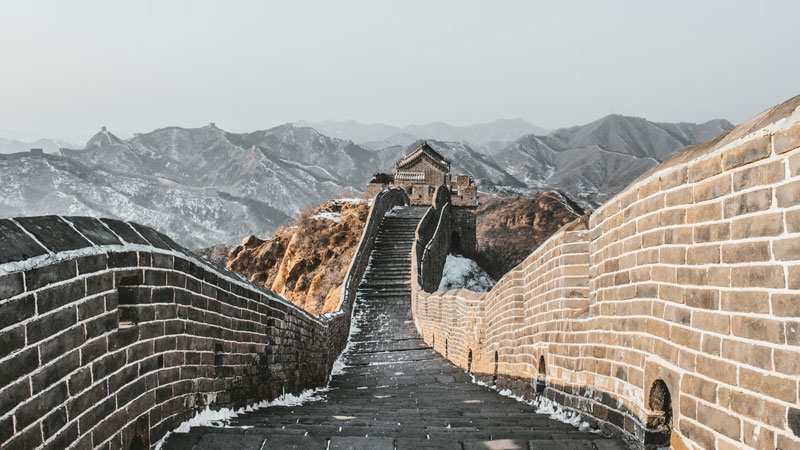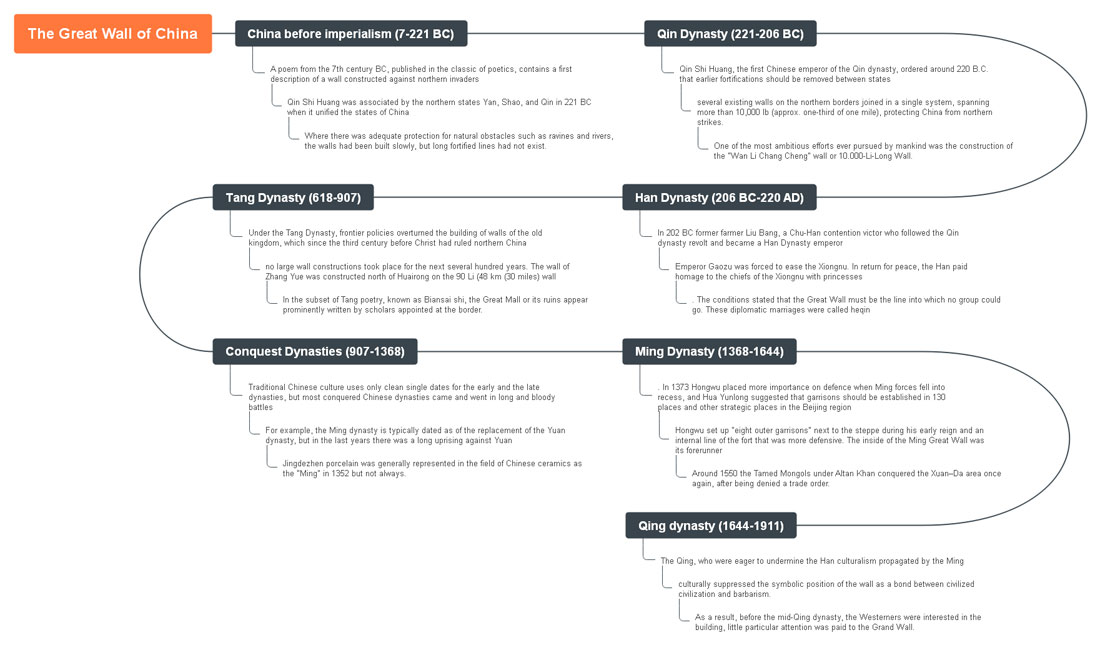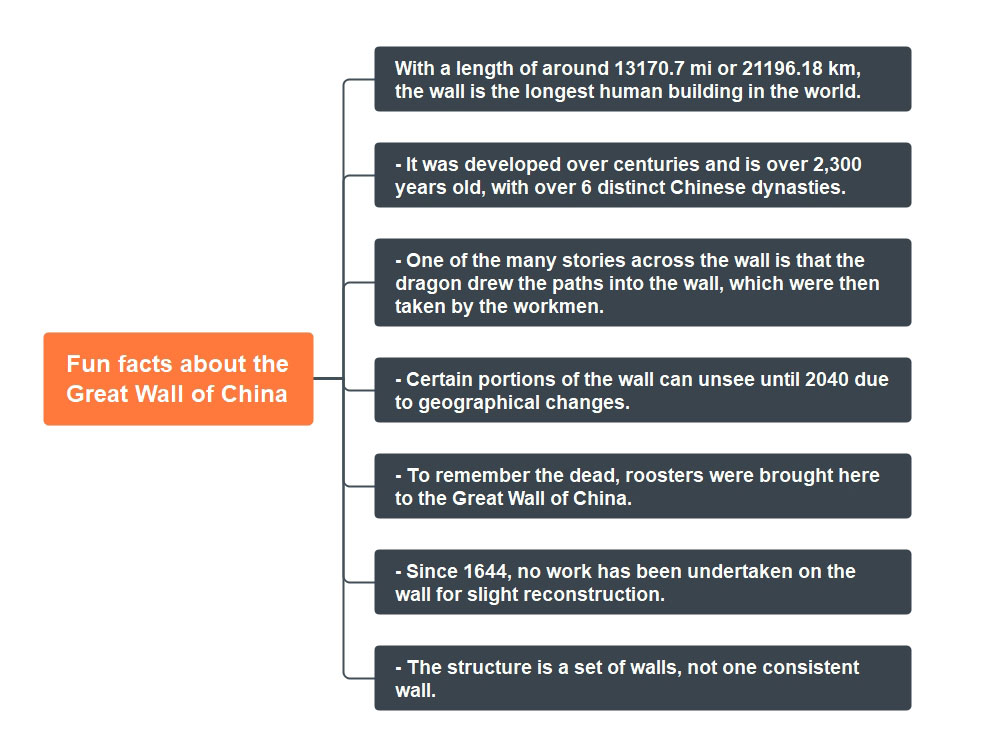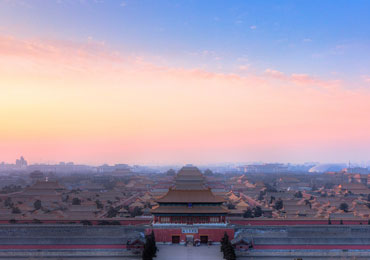The Great Wall of China

Image: The Great Wall of China
Source: unsplash.com
China's Great Wall, which has now been visible, dates from the Ming dynasty when most of the Wall was restored in stone and brick and also stretched across difficult terrains. In comparatively good shape or renovation, some parts are weakened, demolished, or deconstructed because of their construction materials for ideological purposes or lost due to the ravages of time. The Wall is now a respected national sign and a popular tourist attraction for a long time, an object of curiosity for foreigners.
China before imperialism (7-221 BC)
A poem from the 7th century BC, published in the classic of poetics, contains the first description of a wall constructed against northern invaders. Qin Shi Huang was associated with the northern states Yan, Shao, and Qin in 221 BC when it unified the states of China. The walls, referred to by Changcheng, were mainly composed of tamped soil and were simply "tall walls," also translated as the "great wall," with sections built with stones. Where there was adequate protection for natural obstacles such as ravines and rivers, the walls had been built slowly, but long fortified lines had not existed.
Qin Dynasty (221-206 BC)
Qin Shi Huang, the first Chinese emperor of the Qin dynasty, ordered around 220 BC that earlier fortifications should be removed between states, with several existing walls on the northern borders joined in a single system, spanning more than 10,000 lb (approx. one-third of one mile), protecting China from northern strikes.
One of the most ambitious efforts ever pursued by humankind was the construction of the "Wan Li Chang Cheng" wall or the 10.000-Li-Long Wall.
Han Dynasty (206 BC-220 AD)
In 202 BC, former farmer Liu Bang, a Chu-Han contention victor who followed the Qin dynasty revolt and became a Han Dynasty emperor, Emperor Gaozu, was forced to ease the Xiongnu. In return for peace, the Han paid homage to the chiefs of the Xiongnu with princesses. The conditions stated that the Great Wall must be the line into which no group could go. These diplomatic marriages were called Heqin.
Tang Dynasty (618-907)
Under the Tang Dynasty, frontier policies overturned the building of walls of the old kingdom. Since the third century before Christ had ruled northern China, no large wall constructions took place for several hundred years. The Wall of Zhang Yue was constructed north of Huairong on the 90 Li (48 km (30 miles) wall, but it remains uncertain whether or not the current Northern Qi walls were erected or strengthened. In the subset of Tang poetry, known as Biansai shi, the Great Mall or its ruins appear prominently written by scholars appointed at the border.
Conquest Dynasties (907-1368)
Traditional Chinese culture uses only clean single dates for the early and the late dynasties, but most conquered Chinese dynasties came and went in long and bloody battles. For example, the Ming dynasty is typically dated as of the replacement of the Yuan dynasty, but in the last years, there was a long uprising against Yuan, and Jingdezhen porcelain was generally represented in the field of Chinese ceramics as the "Ming" in 1352 but not always.
Ming Dynasty (1368-1644)
Hongwu set up "eight outer garrisons" next to the steppe during his early reign and an internal line of the fort that was more defensive. The inside of the Ming Great Wall was its forerunner. In 1373 Hongwu placed more importance on defense when Ming forces fell into recess, and Hua Yunlong suggested that garrisons should be established in 130 places and other strategic places in the Beijing region.
Around 1550 the Tamed Mongols under Altan Khan conquered the Xuan–Da area once again after being denied a trade order. However, despite many efforts, he couldn't take Xuanfu because of a fortified line of Weng Wanda when Datong's garrison bribed him not to attack. He did not walk around the walls of Weng Wanda to the comparatively poorly guarded Gubeikou, northeast of Peking, instead of continuing his work in this area.
Qing Dynasty (1644-1911)
The Qing, who were eager to undermine the Han culturalism propagated by the Ming, culturally suppressed the symbolic position of the Wall as a bond between civilized civilization and barbarism. As a result, before the mid-Qing dynasty, the Westerners were interested in the building, little particular attention was paid to the Grand Wall.
Fun facts about the Great Wall of China
- With a length of around 13170.7 mi or 21196.18 km, the Wall is the longest human building in the world.
- It was developed over centuries and is over 2,300 years old, with over six distinct Chinese dynasties.
- One of the many stories across the Wall is that the dragon drew the paths into the Wall, which were then taken by the workmen.
- The structure is a set of walls, not one consistent Wall.
- Since 1644, no work has been undertaken on the Wall for slight reconstruction.
- To remember the dead, roosters were brought here to the Great Wall of China.
- Certain portions of the Wall can unsee until 2040 due to geographical changes.
Conclusion
Since China had opened its doors despite the national loss of Opium Wars in the middle of the 19th century by the British and other western powers, many foreign tourists had been exposed to the Great Wall. For these wall watchers, the Juyong Pass near Beijing and "Old Dragon Head" have become famous places. It has been listed on the UNESCO Heritage Site. People from all around the world came to visit the unique masterpiece of human art.






